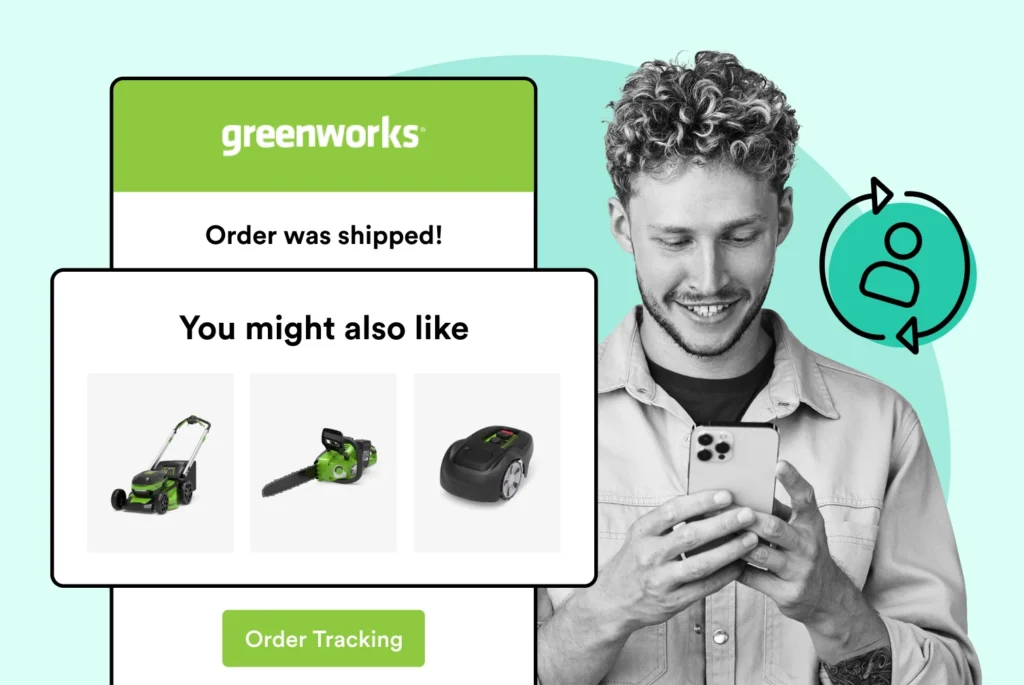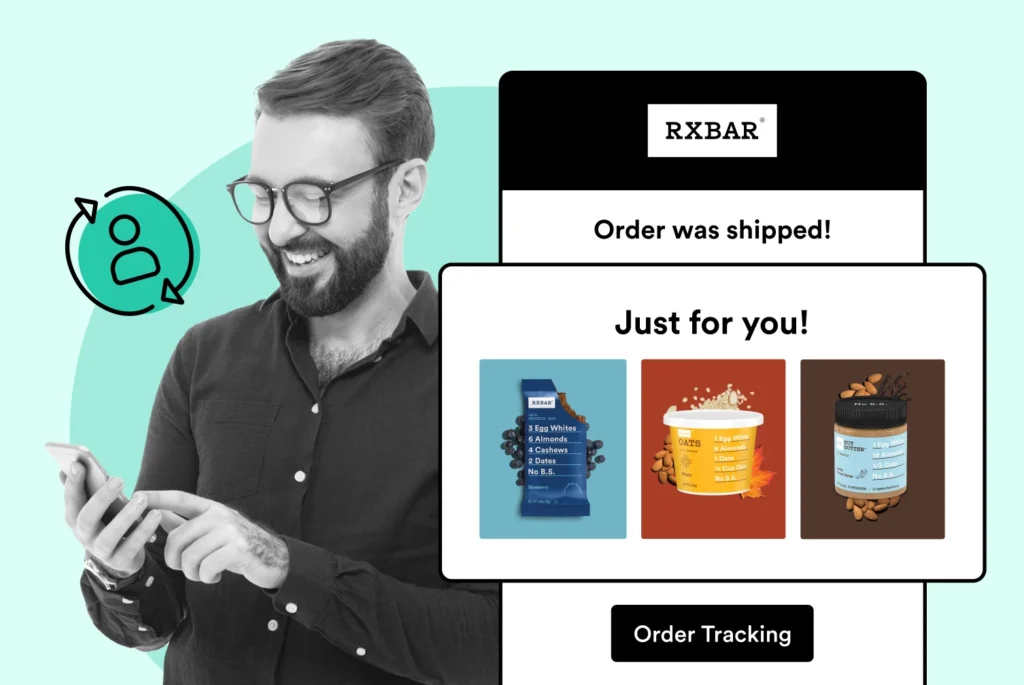
Customer Lifetime Value: Returns’ Impact
Approaches to optimize returns, enhancing customer lifetime value with returns, and consequently boosting your business’s long-term success.
Boost customer experience and reduce support tickets
Realtime order and shipment tracking
Proactive order and shipping notifications
Predictive pre-purchase estimated delivery dates
Self-Serivce branded order tracking
Effortless experience delivered
Make returns profitable and delight customers
Flexibility to define any return destinations & conditions
Simplify returns for your customers and team
Incentivize exchanges over returns
Returns management made easy for your team
Understand why your customers are returning
Unify the online and the in-store experience
Hassle-free pickup experience for customers
In-Store Dashboard to keep operations streamlined
In-Store and Online orders unified
Drive foot-traffic to your stores
Boost customer experience and reduce support tickets
Realtime order and shipment tracking
Proactive order and shipping notifications
Predictive pre-purchase estimated delivery dates
Self-Serivce branded order tracking
Effortless experience delivered
Make returns profitable and delight customers
Flexibility to define any return destinations & conditions
Simplify returns for your customers and team
Incentivize exchanges over returns
Returns management made easy for your team
Understand why your customers are returning
Unify the online and the in-store experience
Hassle-free pickup experience for customers
In-Store Dashboard to keep operations streamlined
In-Store and Online orders unified
Drive foot-traffic to your stores
Find the answer to all your questions
Explore the most comon questions about WeSupply
Calculate the ROI that WeSupply can bring you
Request a no strings attached review of your current shopping experience and missed conversion opportunities
Take a step by step trip through our functionality to see how we can improve your ecommerce processes.
Read actionable articles on how to optimize your post-purchase experience and decrease support tickets
Get inspired by stories of how our customers implemented an effortless post-purchase experience
A Deep Dive into Top Companies' Order Tracking & Returns Strategy
Wondering if WeSupply is a good fit for you? Read through our use cases to see how we can help you increase conversion & improve CX!

How does “returns data improve CLV”? In this article, discover the direct methods through which your returns data can be transformed into actionable strategies, driving Customer Lifetime Value (CLV) growth as an essential component of your e-commerce strategy.
Returns data is a valuable resource for understanding customer behavior and improving Customer Lifetime Value (CLV), with insights that can lead to enhanced product offerings and customer satisfaction.
Strategic returns management, leveraging advanced analytics and predictive modeling, can bolster CLV by fostering customer loyalty through an optimized returns experience and informed inventory and marketing decisions.
The integration of returns data into ecommerce strategies is vital for future growth, enabling businesses to offer personalized shopping experiences, improve operational efficiency, and maintain a customer-centric approach.
WeSupply elevates CLV by combining Return Analytics, Automated and Self-Service Returns, Flexible Policies, Post-Purchase Notifications, Returns Tracking, RMA Automation, Barcode Scanning, and Data Collection. This holistic approach streamlines the returns process, enriches customer experiences, and fosters lasting loyalty. Enhance your returns experience with WeSupply. Get Started today and elevate customer satisfaction!
Returns management in ecommerce is much more than merely handling returned merchandise. It offers a plethora of opportunities for businesses to understand their customers better, improve their offerings, and ultimately enhance the CLV, which represents the overall revenue potential from existing customers.
A glance at the average purchase value shows that customers who have made at least one return spend over double the amount compared to those who haven’t returned anything. This spending disparity, based on returns behavior, underscores the potential of using returns data to elevate CLV.
Within the ecommerce realm, customer value plays a crucial role in estimating Customer Lifetime Value (CLV). CLV predicts the total revenue a business can anticipate from a single customer account. It considers a customer’s revenue value and compares that number to the company’s predicted customer lifetime. By measuring customer lifetime, businesses can use this prediction to identify significant customer segments that are the most valuable to the company.
The calculation of a new customer’s expected monetary value in CLV involves:
Analyzing each stage in the purchase sequence
Adjusting this to estimate the proportion of new customers that will progress to any specific stage
Multiplying this by the anticipated monetary value of an order at each stage, which can be derived from customer lifetime value data.
The importance of CLV becomes evident when considering that a mere 5% boost in customer retention can lead to a revenue increase ranging from 25 to 95%, demonstrating that retaining customers is far more cost-effective than customer acquisition.
Returns data, a rich source of insights, can be strategically harnessed to amplify CLV. By identifying patterns in customer behavior and devising tailored strategies, businesses can improve CLV and the overall customer experience.
Notably, customers who have initiated a return display a significantly higher future value, averaging a 28% increase compared to those who haven’t made a return. Furthermore, these customers have a 43% likelihood of making a purchase again within the subsequent six months, which positively impacts their average customer lifespan.
Bundling offers or advertising complementary products based on returns data can elevate the average order value and provide customers with a more comprehensive solution, resulting in heightened customer satisfaction and loyalty.
Returns data is an underexplored reservoir of customer insights that can be harnessed to transform the way ecommerce businesses approach CLV. By identifying return trends and understanding their impact on customer behavior, businesses can devise strategies that not only address common return issues but also create a favorable return experience. This, in turn, leads to:
heightened customer satisfaction
trust
repeat purchases
the reinforcement of brand loyalty.
Understanding why customers return items and their interactions with the return process is key to nurturing customer loyalty. Identifying key return trends can provide an insight into customer behavior, allowing businesses to adjust their strategies accordingly. These insights can range from sizing issues with fashion products to incorrect gifts during the holiday season or even purchase of multiple products with an intention to return some or all.
By analyzing these return rates and reasons, businesses can gain valuable insights into customer behavior, which can be leveraged to cultivate stronger customer relationships and enhance Customer Lifetime Value (CLV).
WeSupply plays a crucial role in understanding customer return patterns and their influence on consumer behavior. By identifying the most frequently returned products and discerning the specific reasons behind these returns, businesses can enhance their product offerings. The benefits of SKU-level returns analytics are substantial, allowing for rapid identification of return reasons at a detailed product and variant level, including aspects like color, quality, and size. This analysis is instrumental in increasing customer lifetime value, as it provides valuable insights into customer preferences and dissatisfaction, guiding businesses to adapt their products to better meet customer needs and expectations.
Returns data’s influence goes beyond merely identifying return trends; it plays a central role in shaping strategic returns management with the goal of bolstering customer loyalty. Through analysis of returns data, businesses can:
Formulate well-defined and inclusive return policies
Provide adaptable and convenient return solutions
Prioritize customer satisfaction during the return procedure
A seamless returns process that takes into account customer preferences, as indicated by returns data, fosters trust and heightens the probability of recurring business, thereby contributing significantly to enhancing customer loyalty.
WeSupply’s Return Analytics and Automated Returns Management tools are pivotal in enhancing customer loyalty through strategic returns management. By leveraging detailed analytics, these tools provide businesses with insights into return patterns, enabling them to address common issues and streamline the return process. This improved efficiency not only reduces operational costs but also significantly enhances the customer experience. A smooth, hassle-free return process, backed by actionable data, helps in building trust and loyalty among customers, encouraging repeat business and fostering a positive brand reputation.
Cultivating a positive return experience transcends customer satisfaction; it’s about forging robust, enduring relationships with your customers. It’s about turning a potentially negative experience into a positive one that not only retains a customer but transforms them into a loyal advocate for your brand.
Let’s delve into how we can streamline the returns process to enhance the customer experience.
In the current digital era, technology holds a crucial role in enhancing the ecommerce returns process. Tools like WeSupply’s Automated Returns, powered by AI-driven analytics and smart technology, help businesses recover revenue while ensuring a smooth returns process for customers.
The return process is just as important a part of the customer journey as the purchase process. A streamlined returns process can have a positive effect on customer loyalty as it enhances customer satisfaction and retention.
WeSupply revolutionizes the returns process, combining best practices with advanced technology to streamline and enhance the customer experience. Key features include:
Branded Returns Portal: Creates a cohesive, omnichannel experience, avoiding third-party confusion.
Instant Credit for Exchanges: Encourages exchanges over refunds, reducing return rates and boosting order values.
Self-Service Returns: Offers a frictionless experience with shoppers preferring self-service options.
Customers initiate returns in 3 simple steps.
Option for online shoppers to return to physical stores.
Customer support reps can manually review return requests.
QR Code Return Labels: Simplifies returns without the need for printing, using a scannable QR code.
Returns Tracking: Eases post-purchase anxiety, allowing customers to track returns easily.
Proactive Post-Purchase Communication:
Sends return notifications via email and SMS with high open rates.
Offers personalized deals post-purchase to encourage repeat business.
Eliminates the need for customers to make “check-up” calls.
WeSupply’s approach not only simplifies the returns process but also actively contributes to building customer loyalty and trust.Transform your returns experience with WeSupply. Book a Demo now and elevate your customer satisfaction!
The psychology underpinning a seamless return experience, while straightforward, carries significant depth. It revolves around trust and satisfaction. When customers trust that a brand will handle their returns efficiently and fairly, they feel more satisfied and are more likely to remain loyal to the brand.
Providing a seamless return experience has been found to enhance customer satisfaction, foster loyalty, and boost repeat business.
Brands that have transformed their return process have observed favorable outcomes in terms of customer retention and competitive advantage.
Just like in the case of Evereve, the pandemic-induced e-commerce surge led to higher return rates in apparel. Facing unsustainable returns and opaque processes, Evereve adopted WeSupply’s technology for automated, transparent returns management. This shift, focusing on proactivity, self-service, and flexibility, brought cost savings, eased customer service burdens, and streamlined customer experiences. It turned returns into opportunities for increased customer satisfaction and operational efficiency. Discover more about Evereve’s transformative journey and the profound impact of these changes. Read the full Case Study for deeper insights into their success story.
Combat inconvenience with proactivity & self service
Book a quick call with our experts to see how WeSupply can help you make returns easy for your customers with a beautiful, self-service solution that makes their experience easier while also providing new ways to lower costs and earn back revenue.
As we further explore the power of returns data, we must comprehend how this information can aid in optimizing inventory management. By analyzing returns data, businesses can:
Adjust inventory levels to align with customer demand
Enhance stock levels
Address product quality issues
Ultimately improve customer satisfaction and profitability.
WeSupply leverages returns data to enhance inventory management insights. Integrating inventory restocking into the return process, WeSupply offers real-time return shipping analytics and status analysis. This enables businesses to anticipate daily return volumes, optimizing staff allocation for prompt processing and refunds. Key features include defining quality check criteria, collecting customer feedback and images, and enabling warehouse staff to annotate quality inspections on each return. These practices not only streamline operational processes, reducing return-related customer calls, but also ensure effective inventory management by carefully inspecting each returned item to determine its resale viability. This approach provides actionable insights, enhancing both quality control and inventory efficiency.
The customer’s journey extends beyond merely making a purchase; it encompasses the post-purchase experience, particularly the returns process. If a customer decides to return a product, the ease and efficiency of the process can greatly affect their overall user experience (UX), and ultimately, their loyalty to the brand.
Let’s see how returns data can revolutionize UX.
Site navigation and search functionality form essential elements of a customer’s online shopping experience. Returns data provides valuable insights that can be used to optimize these aspects. By analyzing site search data, businesses can identify queries that result in unmatched results, leading to potential improvements in the navigation menu or refining existing ones.
Moreover, returns data can highlight popular categories or products that are frequently returned, indicating the need for optimal placement on the site to facilitate easier access for customers. It can also uncover frequent causes for product returns, like incorrect sizing or misleading images, leading to specific improvements and updates on the product pages.
The checkout process represents the last step in a customer’s purchase journey. A complex or confusing checkout process can lead to cart abandonment and even returns. Returns data can provide insights into how the checkout process can be simplified to enhance the user experience and reduce these issues.
Optimizing the checkout process involves:
Minimizing the required information
Maintaining a user-friendly interface
Considering international users
Establishing trust
Offering convenience and flexibility
Presenting a variety of payment options
Display Estimated Delivery Dates on Product Page, Cart, and Checkout
Implementing these best practices can reduce cart abandonment, enhance customer satisfaction, and increase conversions.
Among the most significant benefits of returns data is its potential to facilitate customer segmentation. By analyzing return behaviors, businesses can segment their customers into various groups, each with unique characteristics and preferences. This segmentation allows businesses to develop tailored marketing strategies for each group, enhancing customer engagement and increasing sales.
Customer segmentation can be as simple as dividing customers into ‘high-returners,’ ‘occasional returners,’ and ‘low-returners.’ Each segment has unique characteristics that can be leveraged to customize engagement strategies.
Tailoring customer engagement based on return history can greatly improve brand loyalty, increase customer satisfaction, and boost sales and revenue. Some strategies to consider include:
Personalizing experiences for high-return customers
Implementing loyalty reward programs
Demonstrating gratitude to top repeat customers to encourage sustained high-value purchases
By implementing these strategies, businesses can create a more personalized and engaging experience for their customers, leading to increased loyalty and sales.
WeSupply’s intelligent approach in identifying high and low-returners allows businesses to customize their engagement and reduce returns fraud. The system can distinguish between trusted clients and serial returners who exploit return policies, such as for one-time use or without intent to keep products. WeSupply’s fraud prevention system automatically detects policy abuse and blocks offending customers. Additionally, it can sync with existing “block lists” to prevent certain customers from making returns or flag them for manual review. This targeted strategy not only protects the business from fraudulent returns but also helps maintain a healthy relationship with genuine, loyal customers.
Personalized recommendations play a significant role in enhancing customer loyalty and CLV. By analyzing returns data, businesses can offer recommendations tailored to each customer’s return behavior. This personalization makes customers feel valued and understood, fostering a sense of connection and loyalty.
Technologies like AI-powered Recommendation Engines can utilize customer data to offer customized suggestions, enhancing the customer experience. Such personalized recommendations can effectively showcase solutions that are more likely to align with customers’ needs, ultimately reducing return rates and improving profitability.
WeSupply leverages on post-purchase email and SMS notifications to implement personalized recommendations. By keeping customers informed with proactive return notifications, WeSupply enhances the customer experience. Moreover, it capitalizes on this engagement by providing custom and personalized offers through these communications. Partner this with WeSupply’s vast array of integrations, including various marketing platforms that allow for personalized upsells within the Branded Returns Portal. This strategy not only informs customers about their return status but also entices them with tailored deals, encouraging repeat business and fostering long-term customer loyalty.
In the ecommerce industry, Customer Lifetime Value (CLV) and returns management are intimately connected. Efficient returns management directly impacts:
Improved customer retention
Increased CLV
Business growth
Profitability
Let’s delve into how an optimized returns management process can significantly boost CLV and how returns data can be used to improve customer retention and acquisition.
Optimized returns management markedly influences customer lifetime value (CLV). Through the effective management of returns and exchanges, businesses can:
Turn a potentially negative experience into a positive one
Reassure customers
Increase the likelihood of repeat purchases
Contribute to higher CLV.
Enhancing returns management to increase customer lifetime value can be achieved by implementing strategies such as:
Improve customer lifetime by focusing on customer retention
Minimizing controllable returns through detailed product descriptions and varied transportation methods
Comprehending the impact of returns on customer behavior
Integrating transparent communication, user-friendly processes, a well-defined policy, adaptability, tracking, and management.
Returns data can play a significant role in improving customer retention and acquisition. By understanding customer return behaviors and preferences, businesses can develop strategies that address their needs and enhance their shopping experience, thereby fostering customer loyalty and boosting CLV.
By offering personalized communication and creating a comprehensive customer retention plan, businesses can effectively reduce return rates and improve profitability. Further, adopting strategies like win-back campaigns, organizing teams around the customer relationship, and measuring the current retention rate can enhance customer satisfaction and increase repeat purchases.
Returns data is a potent tool that can be harnessed for business growth and adaptation. By identifying areas for improvement and monitoring the impact of strategic changes, businesses can:
Continuously refine their operations and strategies
Enhance customer satisfaction
Reduce return rates
Increase profitability.
Returns data provides valuable insights into specific pain points, bottlenecks, and sources of friction within the customer journey. By scrutinizing return reasons, customer feedback, and product performance data, businesses can pinpoint potential areas for improvement, including opportunities to enhance product quality and address common issues.
Moreover, by regularly analyzing returns data, businesses can proactively address common issues, leading to enhancements in product offerings, process optimizations, and ultimately, improved customer satisfaction.
Assessing the impact of strategic changes on returns and CLV is essential for ongoing improvement. By tracking changes in customer retention and repurchase rates, businesses can understand how these changes affect their overall profitability and customer satisfaction.
Furthermore, businesses can employ a combination of quantitative and qualitative data analysis to effectively monitor changes in CLV and returns. By tracking metrics such as return rates, average order value (AOV), and purchase frequency, and examining customer feedback and return reasons, businesses can understand the underlying drivers of these metrics and how strategic changes affect them.
WeSupply aids in boosting ROI by analyzing returns data and customer behaviors. This analysis allows WeSupply to optimize return policies and customer engagement, directly influencing ROI. Keen to see how these changes can financially benefit your business? Use our ROI Calculator for a clear picture of the potential gains.
In the age of big data, advanced analytics and predictive modeling are taking on a progressively significant role in returns management. These modern tools and techniques allow businesses to:
Anticipate the volume of returns across various levels, including retailer, product type, and timeframe
Predict and prepare for returns, ultimately leading to cost reduction
Enhance optimization of returns management procedures
Advanced analytics has opened up new avenues for returns management. Through automation tools like:
RMA authorization
Barcode scanning
Data capture
Real-time tracking systems
Businesses can streamline their return procedures, enhancing customer satisfaction and reducing costs.
WeSupply integrates modern tools and techniques for predictive returns management, streamlining the process while minimizing RMA costs and enhancing operational efficiency. Key features include:
WeSupply integrates modern tools and techniques for predictive returns management, streamlining the process while minimizing RMA costs and enhancing operational efficiency. Key features include:
Barcode Scanner Integration: Allows quick identification and status updates of returns with a simple scan in the warehouse.
Collecting Product Images and Feedback: Enables customers to upload images and describe issues directly, streamlining communication and providing valuable insights.
Real-Time Returns Tracking: Offers customers the ability to track their return’s progress easily, with individual tracking numbers for split returns to eliminate confusion.
These advancements in returns management not only reduce mistakes and save time and money but also nurture positive customer relationships by easing post-purchase anxiety and providing clear, efficient communication channels. Experience the future of returns management with WeSupply. Book a Demo now and see how seamless and efficient your process can be!
Predictive analytics is gaining importance in ecommerce, extending beyond returns management to influence inventory management, marketing, and user experience decisions. By analyzing historical sales data, customer behavior, and market trends, predictive analytics can forecast demand and optimize inventory levels, preventing out-of-stock situations, decreasing excess inventory, and enhancing order fulfillment.
Moreover, predictive analytics can inform marketing strategies by providing insights into customer preferences and behaviors. This can lead to:
more targeted marketing campaigns
better product recommendations
improved user experience
increased customer satisfaction and loyalty.
Looking to the future of ecommerce, it’s evident that the strategic assimilation of returns data will maintain a major role. With the rise of advanced analytics and predictive modeling, businesses are better equipped to:
Analyze and understand return behaviors
Refine their strategies
Enhance customer satisfaction
Boost profitability
The role of returns data in ecommerce strategy is evolving. Businesses are increasingly leveraging this data to enhance products, gain insights into customer behavior, and optimize operational processes. This strategic use of returns data is expected to significantly influence future ecommerce strategies by enabling businesses to refine their return policies, enhance their service offerings, lower return rates, and foster customer loyalty.
As we look forward, we can anticipate returns data playing a more prominent role in molding the future of ecommerce. As businesses continue to harness this data for actionable insights, we can look forward to seeing more personalized customer experiences, improved operational efficiencies, and innovative strategies that drive business growth and customer loyalty.
Incentivize exchanges over returns
Book a quick call with our experts to see how WeSupply can help you save sales through exchanges and boost the average order value using instant store credit.
In conclusion, businesses can construct a resilient, customer-centric ecommerce ecosystem by harnessing returns data. This involves a strategic focus on continuous improvement and the integration of customer feedback into business practices.
Businesses can gain valuable insights into customer behavior and preferences, enabling them to offer more personalized experiences, enhance customer satisfaction, and ultimately, boost profitability.
As we look ahead, the strategic integration of returns data will continue to shape the future of ecommerce. This data offers a wealth of insights into customer behavior and preferences, enabling businesses to:
Refine their strategies
Enhance their offerings
Prioritize customer-centricity
Leverage advanced analytics
Focus on personalization
Improve customer experiences
Implement innovative strategies
Drive business growth
Foster customer loyalty
The journey towards ecommerce excellence is an ongoing one. It requires a continuous commitment to improvement, a relentless focus on the customer, and the strategic use of data.
In summary, returns data plays a vital role in ecommerce, providing valuable insights that businesses can leverage to enhance customer lifetime value, improve customer loyalty, and optimize inventory management. By identifying return trends and understanding their impact on customer behavior, businesses can devise strategies that not only address common return issues but also create a favorable return experience. This, in turn, leads to heightened customer satisfaction, trust, repeat purchases, and the reinforcement of brand loyalty.
WeSupply enhances CLV by harnessing the power of comprehensive returns management. It offers Return Analytics for deeper insights into return patterns, Automated Returns for efficiency, and Self-Service options for customer empowerment. Flexible Return Policies adapt to various customer needs, while Post-Purchase Notifications and Returns Tracking keep customers informed and engaged. RMA Automation streamlines authorization processes, and Barcode Scanning Integration accelerates return handling. Additionally, WeSupply’s robust Data Collection capabilities provide valuable feedback and insights. This array of features not only optimizes the return experience but also builds stronger, more loyal customer relationships, directly contributing to an increase in CLV.
To improve your Customer Lifetime Value (CLV), you can utilize cross-selling and upselling, offer a memorable customer experience, create a loyalty program, listen to your customers, and personalize marketing efforts based on customer data. By implementing these strategies, you can maximize your CLV and enhance customer retention.
To calculate Customer Lifetime Value (CLV), you need data such as Average Order Value (AOV), Average Purchase Frequency Rate (AFR), Churn Rate, Costs associated with converting a customer (CAC), Customer Value, and Average Customer Lifespan.
WeSupply analyzes returns data to understand customer preferences and return patterns. This insight helps in optimizing return policies and customer engagement strategies, directly influencing and improving CLV.
Return Analytics provide detailed insights into why customers return products, enabling businesses to make informed decisions to improve product quality and service, thus enhancing customer retention and CLV.
Businesses can use WeSupply’s ROI Calculator to estimate the financial impact and potential gains from implementing WeSupply’s returns management solutions.

Learn How To Create Successful Post Purchase Email Campaigns
Build an effective post-purchase email flow that helps you increase customer satisfaction and drive revenue growth!

Approaches to optimize returns, enhancing customer lifetime value with returns, and consequently boosting your business’s long-term success.

Practical upselling strategies: encourage repeat business & build stronger customer relationships, directly contributing to enhanced customer lifetime value.

How to leverage returns data, enhance the returns experience, and ultimately, increase customer lifetime value e-commerce returns.

If you’re a Shopify retailer seeking strategies to enhance customer retention & maximize repeat sales, then you’re in the right place.

Explore the strategic use of discounts to improve Shopify CLV, the balance between enticing offers and brand value.

Practical upselling strategies: encourage repeat business & build stronger customer relationships, directly contributing to enhanced customer lifetime value.

Let’s explore practical strategies to increase your CLV: how to calculate, analyze, and amplify this pivotal metric.

Customer lifetime value (CLTV): Let’s navigate through its calculation & its profound implications for your marketing strategy & bottom line.

This article dives into the how-to of managing exchanges within your Shopify store, offering practical tactics and key insights.